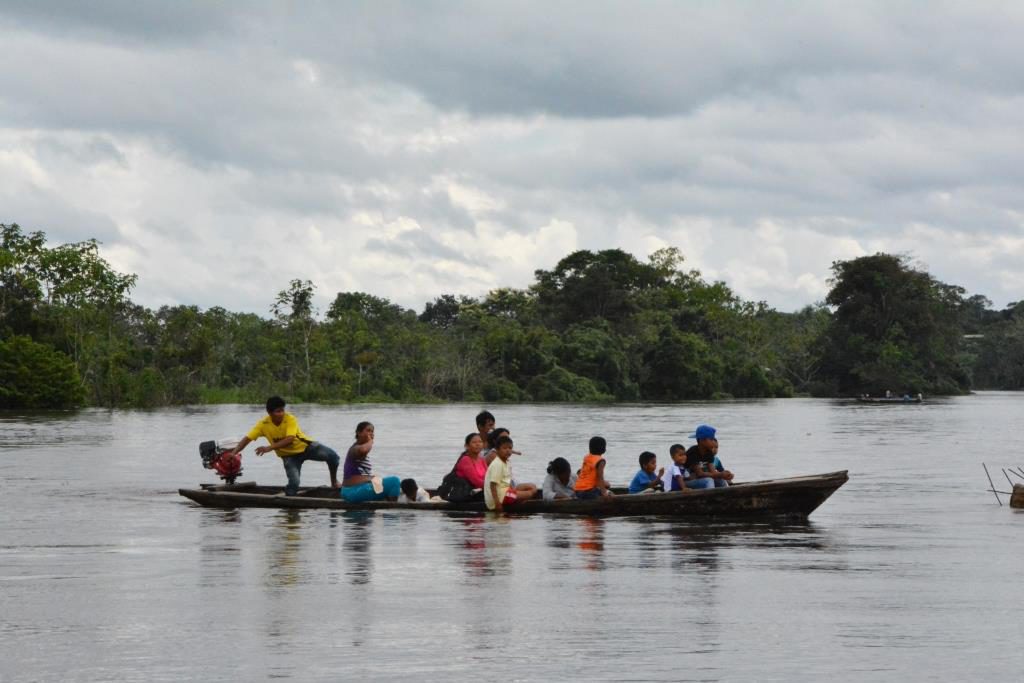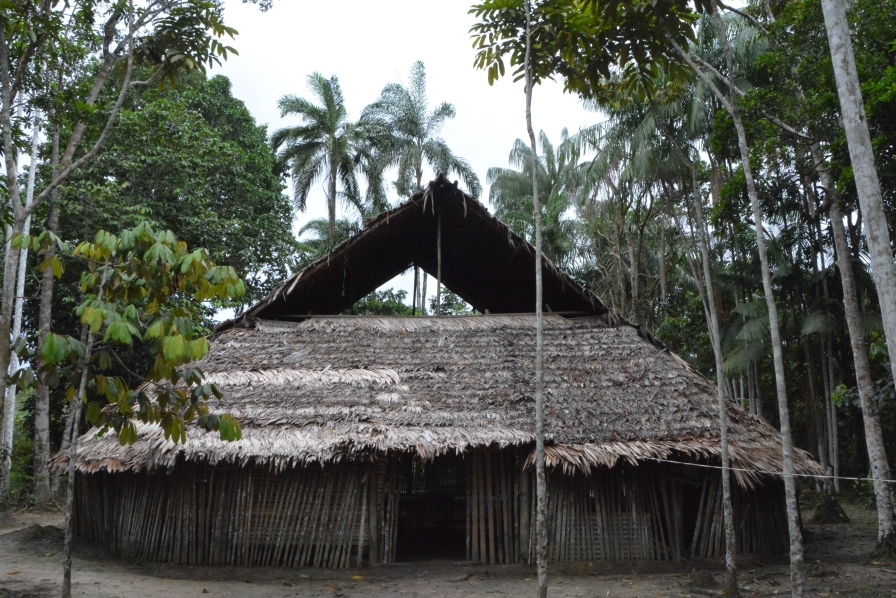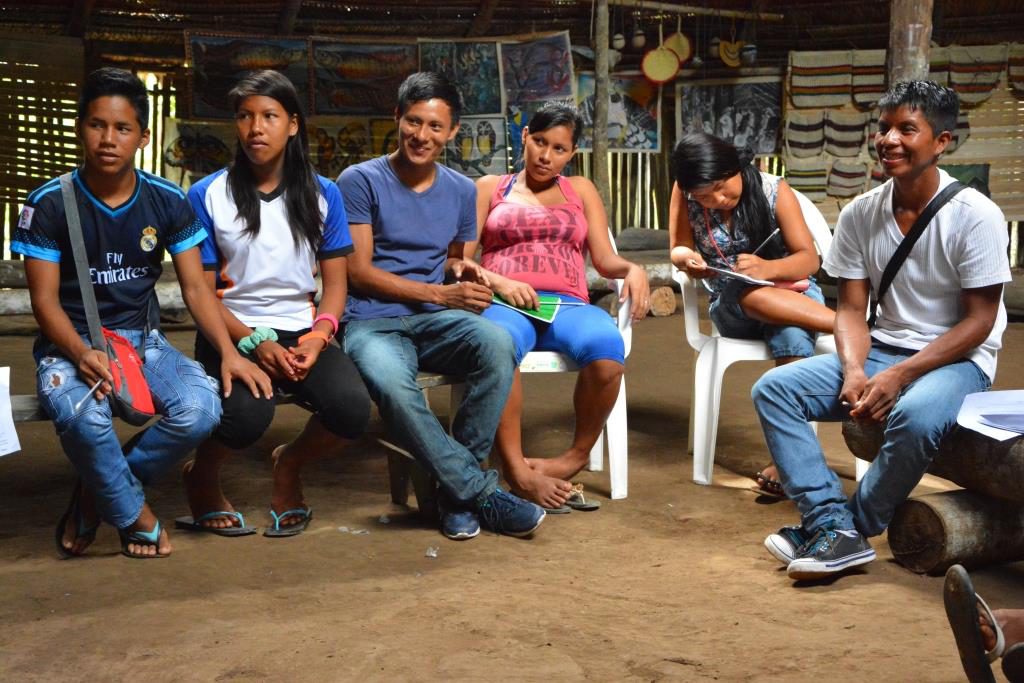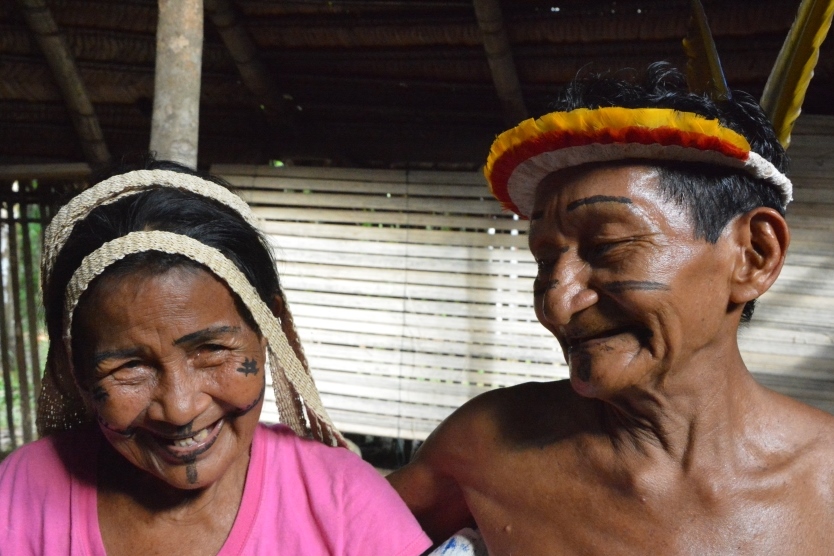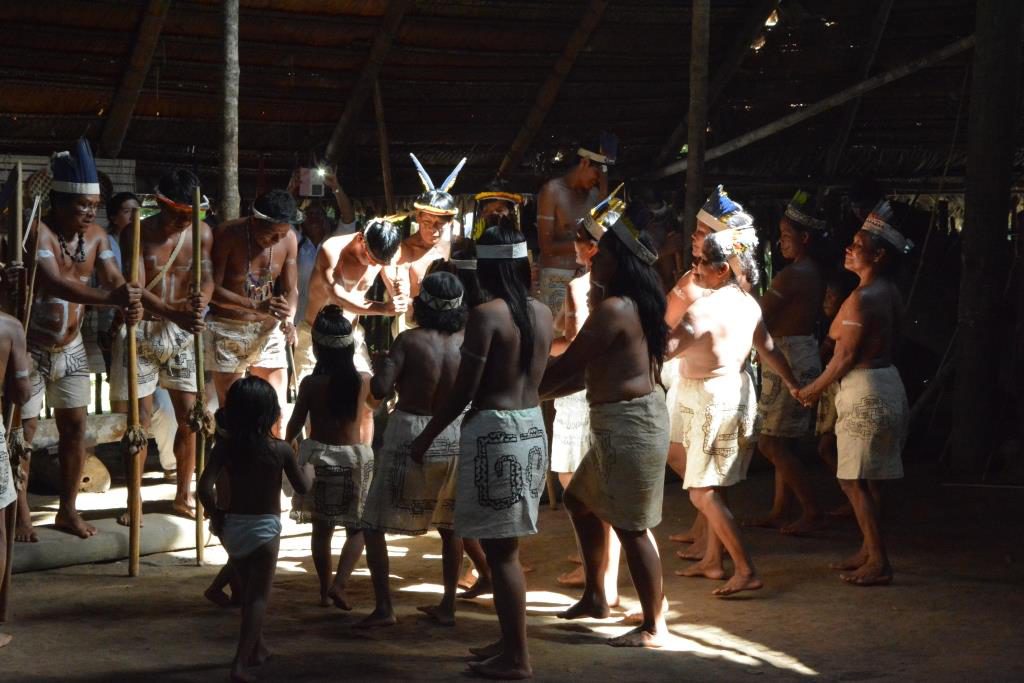Ampiyacu, Northern Amazon, Perú
The Ampiyacu river is a tributary of the Amazon, situated in Northern Peru at the border with Columbia. The protected area of the same name has a population of about 2,000 people of four distinct indigenous groups. One of them, the Yaguas, are the earliest inhabitants of this region. The three other groups, the Huitoto, Bora and Ocaina are originally from Columbia. Their ancestors were brought here during the rubber boom at the beginning of the twentieth century, after the local indigenous population had nearly been exterminated due to the harsh working conditions. The draconic exploitation of their labor force during that time, the eruption of diseases which led to the decimation of these groups, and the long influence of “civilizing forces” such as wide-spread evangelisation have had a deep impact on the social structures and daily life in the villages.
The situation of the young generation is worrisome, with reports of high suicide rates and general loss of orientation. Many young people feel torn between the promises of “modern” life in the nearest cities Pebas and Iquitos, where they are heavily discriminated and often live under deplorable conditions, and the failing social structures in the villages which no longer manage to provide them with a firm emotional foothold and can only offer them few economic opportunities.
As a response to a plea by the local indigenous federation FECONA and the Peruvian environmental organization „Instituto del Bien Común” (Institute for the Common Good, IBC), OrigiNations organised a five-day workshop with youth on the preservation of cultural traditions and civil society organization. The workshop was implemented in
a traditional assembly hall, the “maloca” (see middle picture in the first row) in the village of Pucaurquillo in April 2016 in collaboration with these two institutions.
The workshop offered youth from the four indigenous groups a space to discuss topics such as discrimination and cultural identity, to begin to reconstruct their history together with the elders, and to start organising themselves as a group. In this way, the young members of the community can support each other, join forces in order to document and promote their cultural traditions that are being forgotten, and get involved in the conservation of their protected area to conserve the basis of their future livelihoods in this territory.
Background Information
- A 4-minute video on our workshop in April 2016 can be found here.
- A short video on village life in Pucaurquillo.


